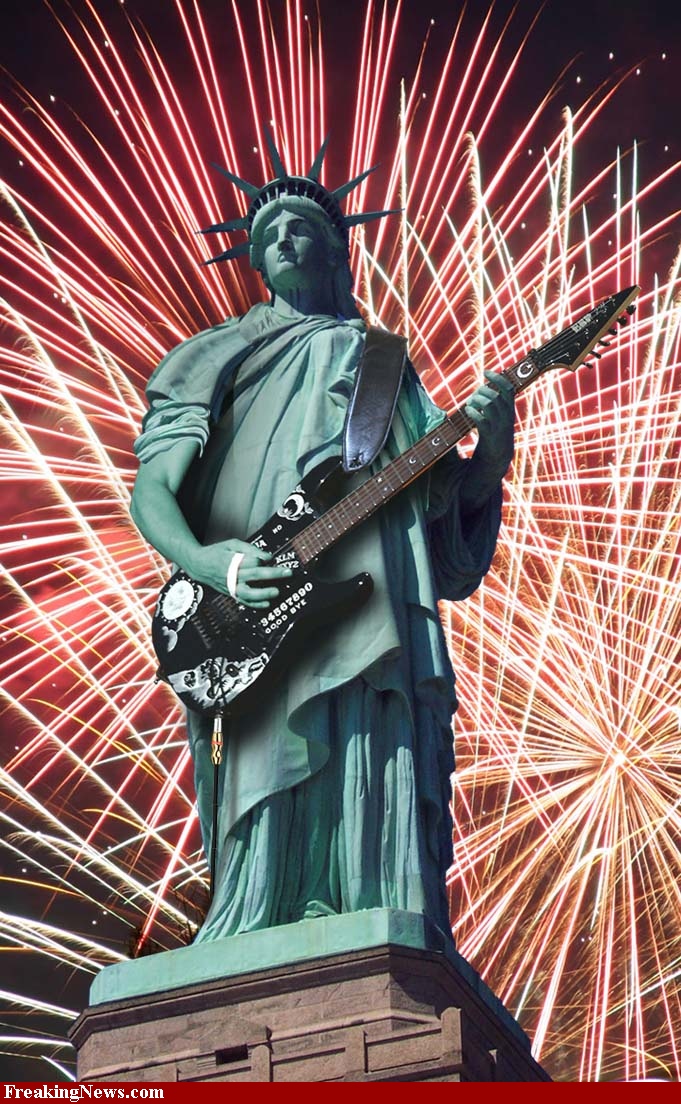|
Midterm1 (2013 midterm1 assignment) Sample Student Midterm Answers 2013 #1: Long Essay |
LITR 4333
|
 |
Cassandra Rea
7th
October 2013
Crossing the Invisible Boundary Between Immigrant and Minority Literature
As an individual of mixed race coming from
immigrants and the dominant culture, it was important to me that I look at the
big picture of the New World now known as America, broken down from these
cultural narratives to understand not only my past but others as well. Immigrant
and Minority narratives are cultural narratives that can help connect the reader
to what life was like when they came to the New World. Although they seem
similar at first glance such as they both are not written from the dominant
culture and they present their struggles within the dominant culture, they do
indeed have major differences between them including immigrants chose to come to
the New World as opposed to the minorities who were either forced or were
already present, immigrants wanted to go after “the American Dream”, and
minorities resisted assimilation within the New World. Despite their
differences, they share a bond of telling their defining story of trials and
tribulations about coming into the New World.
The “standard” immigrant story is a story of
escaping the Old World, the journey to the New World, the culture shock and
exploitation of discrimination from the dominant culture, assimilating to the
New World and its dominant culture, as well as the reawakening of ethnic
identity. Despite some best efforts, assimilation did not come easy such as
Anzia Yezierska in Soap and Water.
She never looked into my eyes. She never perceived that I had
a soul. She did not see how I longed for beauty and cleanliness. How I strained
and struggled to lift myself from the dead toil and exhaustion that weighed me
down. She could see nothing in people like me, except the dirt and the stains on
the outside. (Pg. 5)
Anzia’s dean of her college could only see the differences
that separated them such as her appearance. But Anzia worked night and day just
so she could finish college to become a teacher. No matter how hard Anzia worked
between her job and school, all her dean could see was how they did not match.
She came to the New World with the hope of a better life and instead she just
kept getting stepped on and road blocks being put in her way. Anzia’s narrative
is a prime example of believing in this so called dream but no one had ever
expressed in the past how hard that it would be. All she wanted to do was
assimilating to the dominant culture but could not due to her appearance.
Another example of an immigrant narrative is
Nicholasa Mohr’s The English Lesson,
which is about immigrants getting the opportunity to learn English so they can
communicate with the dominant culture. But what is different from this narrative
compared to Soap and Water, is that
Mohr gives the reader an insight to an immigrant named Diego Torres who had no
desire to assimilate to the dominant culture. A previous student stated in his
midterm from 2009, that Diego “is one of the characters in the story, which make
the story standout and pop. I do. Mohr describes an immigrant narrative
that involves an immigrant that has no interest of being an American citizen.”
(Sample Student Essay-The New World: A
Land of Opportunities or Nothing But Pure Torture, Struggles & Obstacles). With
Mohr having a character like Diego, she presents a peek into a minority because
even though Diego was an immigrant, he had no desire what so ever to assimilate.
Even
though immigrants and minorities both struggled within the New World, the key
difference between the two is that minorities did not choose to come to the New
World or in the Native Americans case, they were already present within the
Americas. The two major minority groups discussed thus far are African Americans
and Native Americans. Both races did not have the notion of “the American Dream”
but rather the “American Nightmare”. They each had their own version of hell
with African Americans being forced to the New World through slavery such as
Olaudah Equiano who was kidnapped from his village in Africa and was forced into
to slavery. He stated in his narrative that he “constantly grieved…wishing for
death rather than anything else.” (CH. 3 Par. 2) Equiano’s life in slavery was
so horrid that he longed for death so he could escape the fate of being a slave
forever. At the time he saw no way out, any desire to assimilate to the white
man but rather give up his life because slavery was ultimately worse than death.
Unlike African Americans
who came to the New World through slavery, Native Americans were already present
in the Americas and were constantly uprooted from their homes and relocated
because they were in the way of the dominant culture. Not only were they forced
out of their homes but they fell into tragic living situations because they
basically fell to the bottom of the barrel. A trend that I found amongst the
Native American narratives is that they talked about how the white man came to
their land. Handsome Lake of the Seneca Tribe wrote his narrative entitled,
How the White Man Came to America
describes his version of events of the his world becoming the “New World” to the
white man. He explains that a preacher from across the ocean stumbled upon a
book and sought out God who told him that
Across the ocean that lies
toward the sunset is another world and a great country and a people whom you
have never seen. Those people are virtuous, they have no unnatural evil habits
and they are honest. A great reward is yours if you will help me. Here are five
things that men and women enjoy; take them to these people and make them as
white men are. (Par. 5)
This quote above explains
how the white man knew there were people already inhabiting the land but to go
forth and put their beliefs on these people. To make them as the white man is
Handsome Lake’s version of explaining the urge of the dominant culture’s attempt
to assimilate the Native Americans. Towards the end of the narrative it is
revealed to the priest that it was the devil and not God who tricked into
looking for the “New World” and now the native people suffered. Chrystos is also
a Native American who used poetry to describe how he did not choose to have the
dominant culture invade his land and the refusal to assimilate. He makes it
clear in his poem that the Native Americans did not “sign no treaty, WHAT are
you still doing here, go somewhere else…” (Lines 13-14); he is adamant and
forceful by saying with conviction that it was their land first and they choose
not to assimilate to their ways so why are they still on their land. It is very
clear that the Native Americans are indeed angry with the white man and the
dominant culture because they invaded their home and refuses to leave.
Another
term that can get confused within the cultural narratives is the model
minorities. Even though they are given the title of minority, they are in fact
an immigrant who fits the pattern of an “ideal immigrant”. The model minority
tends to assimilate in the dominant culture values such as hard work, the need
for an education, family stability, and socioeconomic progress in STEM fields
(science, technology, engineering, and mathematics). What sets the minority
model from other immigrants is that they just do not settle, they go above and
beyond to be very successful but still hold on to some things such as religion
and language. The first model minorities were Jewish immigrants and now Asian
Americans have become the model minority. Sui Sin Far wrote her narrative about
a man who brings his wife and child from Asia to America. But at the check point
the baby is not allowed into the country because of some paper work issue. The
parents assimilate to the dominant culture by trying to follow the rules and
procedures to get their child back even though it takes months. Another
immigrant narrative that shows success and assimilation amongst the Asian race
is Gish Jen’s, In the American Society.
Her father came to the country and took over a pancake house in which he became
very successful. He was successful enough that her father had already had money
put back for college for his two daughters. In this part of the narrative, this
shows the drive and determination and going beyond the minimum to be prosperous.
With having money, their mother wanted to assimilate by joining the local
country club. She wanted the need to fit in with the dominant culture and used
all her resources to try but failed. This narrative had all the ingredients to
represent what the model minority looked like or is supposed to look like. But
the tricky thing about the model minority is where does it fall into place
amongst the other narratives? To me, it seems to have a sub category of its own
because even though it indeed falls under the immigrant story, it is different
than others, which is why it has its own special title.
It is
important to remember that these narratives do not tell the whole story of
immigration but shows bits and pieces into the lives of different individuals.
In any of these narratives, a reader can find many different purposes such as
Anzia’s hardship in America or Chrystos’s hate towards the white man. They all
serve a purpose to show different kinds of feelings and ultimately to recount a
personal story of their life. I feel that it depends on the person as to how
they can or cannot identify with a narrative. Personally, I was able to identify
with Anzia’s narrative the most because of the flow of her words. She spoke with
so much defeat and sadness that at points in the narrative, I felt her pain
along with her. I feel that it does not matter what part of life you come from
but the immigrant and minority narrative can tell us a lot about how America
came to be. Even though there has been a dominant culture through the white man,
it is the immigrants and minorities who are shaping this country into a melting
pot of different cultures that maybe one day, there will no longer be a dominant
culture. All in all, they teach the reader an outlook of the famous “American
Dream” as well as the horror stories that went along with it and to me that is
what they have most in common, is the fact that they give us a peek into the
true reality.



